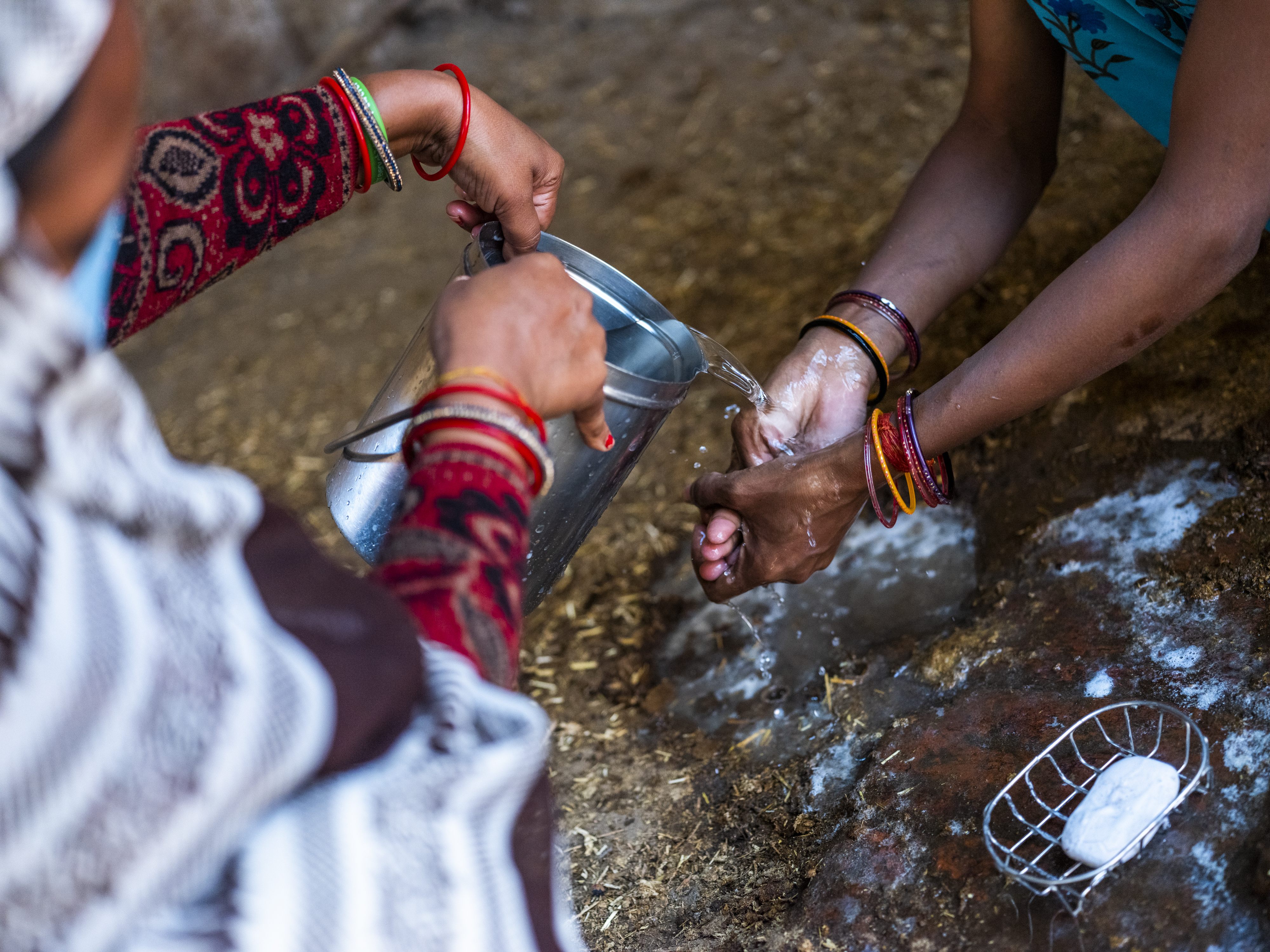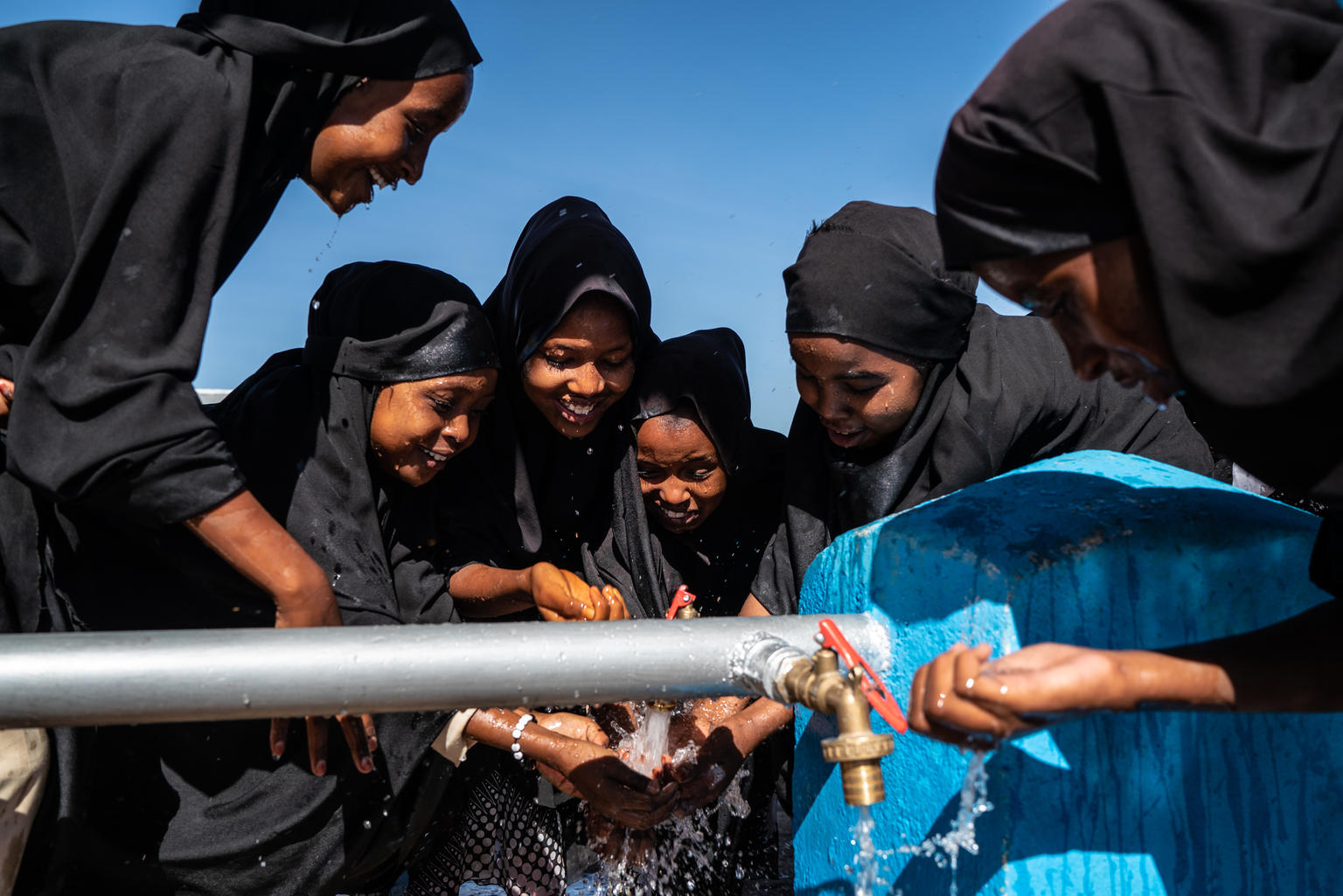Handwashing and Hand Hygiene
Hands play a significant role in spreading diseases. Cleaning your hands regularly with water and soap or an alcohol-based rub is a highly cost-effective way to protect people’s health.
However, billions of people have no access to handwashing facilities with soap and water. Investment in hand hygiene is an essential tool in preventing and mitigating deadly disease outbreaks, including COVID-19.

The issue explained
Lack of hand hygiene is dangerous. Many infectious diseases, such as cholera and pneumonia, are often caused by pathogens being transmitted through the air or spread by people’s hands. Faeces left exposed will find its way back into people’s mouths without good hygiene behaviours.
Diseases spread by poor hand hygiene have an enormous impact. High rates of diarrhoeal diseases, and acute respiratory, skin and eye infections are all driven to varying degrees by poor hand hygiene, devastating families and placing avoidable burden on the healthcare system. Children under five years old are particularly vulnerable.
Access to hand hygiene facilities remains stubbornly low. COVID-19 is the latest health emergency to raise awareness of hand hygiene. However, access to hand hygiene facilities, reliable water supply, soap or alcohol-based rub, and knowledge of good hygiene behaviours are still low in many areas.
Billions of people rely on healthcare centres without hand hygiene facilities. Similarly, for vast numbers of people, there is nowhere to clean one’s hands at home, school, work or in public spaces. Combined with a lack of awareness of good hand hygiene behaviours, this means one of the primary barriers to infectious diseases is missing in large proportions of society.

The way forward
Hand hygiene must be recognized as a fundamental behaviour. The transformative health benefits of improved water and sanitation services can only be fully realized when good hand hygiene behaviours are practised. This simple act is proven to dramatically reduce the spread of deadly diseases.
Governments must prioritize hand hygiene to drive progress across the SDGs. Handwashing with soap or alcohol-based rub plays a critical role in public health, and thereby supports education and economic outcomes. Governments must promote and facilitate hand hygiene across society, and ensure handwashing facilities in every healthcare facility and school.
Hand hygiene is a service and a behaviour. Governments must establish clear policy relating to the necessary water and sanitation services and facilities, as well as the promotional effort needed to educate communities and sustain good practices. Public spending should aim to stimulate investments from households and the private sector.
Hand hygiene is a relatively simple, highly cost-effective health intervention. It requires:
- A reliable water supply.
- Availability of affordable soap or an alcohol-based rub.
- A sink or similar receptacle that can be safely emptied.
- Information on effective handwashing techniques.
Handwashing should be practised at key moments, such as:
- Before preparing food, eating or feeding someone else.
- After going to the toilet.
- After touching surfaces frequently exposed to potential contamination.
Facts and Figures
- 2 billion people still lack basic hygiene services, including 653 million with no facility at all. (WHO/UNICEF, 2023)
- Unsafe water, sanitation and hygiene are responsible for the deaths of around 1,000 children under 5 every day. (UNICEF, 2023)
- During childbirth, hygiene – and WASH services more generally – have critical impacts on the health of mothers and babies. Approximately 43% of global newborn deaths occur in sub-Saharan Africa, where only half of health care facilities have a water source on site. (WHO/UNICEF, 2023)
- 818 million children lack a handwashing facility with water and soap at their school.(WHO/UNICEF, 2021)
- 462 million children attend schools with no handwashing facilities at all. (WHO/UNICEF, 2021)
- In health care facilities in least developed countries, 32% have basic hand hygiene services and 75% have hand hygiene at points of care. (WHO/UNICEF, 2023)
- Every year, unsafe WASH is responsible for around 395,000 deaths of children under five, representing 7.6% of all deaths in this age group. This includes deaths from diarrhoea and acute respiratory infections – the top two infectious causes of death for children under five globally. (WHO, 2019)
- 1.4 million deaths could be prevented each year with safe WASH. (WHO, 2019)
- Timely hand hygiene prevents up to 50 per cent of avoidable infections acquired during health care delivery, including those affecting the health workforce. (WHO/UNICEF, 2021)
- Since 2015, the number of people with basic hygiene services has increased by over 1 billion, and the number of people without basic services has fallen by half a billion (from 2.5 billion to 2 billion). (WHO/UNICEF, 2023)
- Hygiene promotion is the most cost effective health intervention. (World Bank, 2016)
